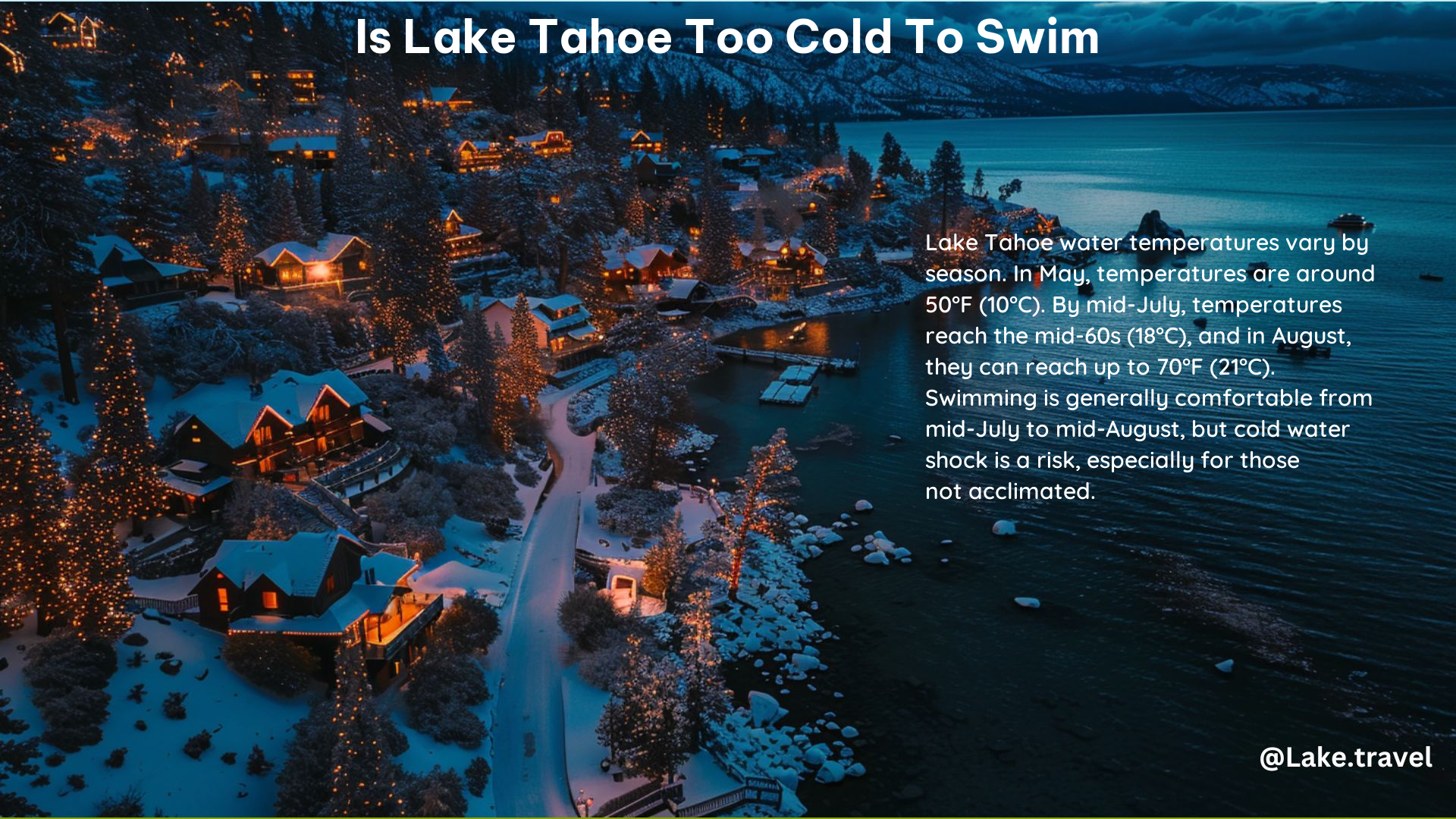Lake Tahoe, a renowned alpine lake straddling the California-Nevada border, is a popular destination for outdoor enthusiasts. However, the question of whether the lake’s waters are too cold for swimming is a common concern among visitors. In this blog post, we’ll explore the water temperatures, safety considerations, and the best time to swim in this stunning natural wonder.
Water Temperature in Lake Tahoe
The water temperature in Lake Tahoe can vary significantly throughout the year, with the coldest temperatures occurring during the winter months and the warmest temperatures in the mid-summer.
Winter and Early Summer
- During the winter months, the average surface temperature of Lake Tahoe can range from 42°F (5.6°C) to 50°F (10°C).
- In the early summer, typically in June and early July, the water temperatures can still be below 60°F (15.8°C), which may be too cold for some swimmers.
Mid-Summer
- From mid-July to mid-August, the surface temperature of Lake Tahoe warms up to the low to mid-60s (17°C-20°C) and can even reach 70°F (21°C) on some days.
Seasonal Variations
- The average surface temperature of Lake Tahoe ranges from 42°F (5.6°C) in the winter to 70°F (21°C) in the summer.
Safety Considerations

Swimming in the cold waters of Lake Tahoe requires special precautions to ensure the safety of swimmers.
Cold Water Shock
- Cold water shock is a significant concern, as it can cause muscle cramps, disorientation, and even cut off oxygen flow.
- Wearing a life vest and being aware of the water conditions is crucial to mitigate the risks of cold water shock.
Wetsuits
- Wearing a wetsuit is highly recommended, especially for swimmers who plan to swim laps or stay in the water for extended periods.
- Wetsuits help insulate the body and maintain core body temperature, reducing the risk of hypothermia.
Acclimatization
- Allowing your body to acclimate to the altitude and cold water conditions is essential.
- Arriving a few days early can help your body adjust to the unique environment of Lake Tahoe.
Swimming Conditions
The swimming conditions in Lake Tahoe can vary greatly, presenting both challenges and opportunities for swimmers.
Gyres and Currents
- Lake Tahoe has two major gyres and numerous smaller ones that can push and pull swimmers, making navigation and distance estimation more difficult.
Wind and Waves
- Conditions in the lake can range from flat and glassy to windy with white caps and chop, which can affect the swimming experience.
Altitude
- Lake Tahoe is situated at an altitude of 6,225 feet above sea level, which can cause altitude sickness in some swimmers.
Best Time to Swim
While the water in Lake Tahoe can be quite cold, the mid-July to mid-August period offers the most favorable conditions for swimming.
- During this time, the water temperatures are typically in the low to mid-60s (17°C-20°C), which is more comfortable for most swimmers.
- The weather is also generally more stable, with fewer wind and wave disruptions.
Additional Information
- Lake Tahoe is among the deepest lakes in the world, with a maximum depth of 1,644 feet.
- Warming water temperatures due to climate change are affecting the lake’s ecosystem, leading to increased algae growth.
In conclusion, while Lake Tahoe can be quite cold, especially during the winter and early summer, the mid-July to mid-August period offers the most favorable conditions for swimming. By understanding the water temperatures, safety considerations, and swimming conditions, visitors can plan their Lake Tahoe swimming experiences with confidence and enjoy the stunning natural beauty of this alpine gem.
Reference:
– Lake Tahoe Water Temperature
– Cold Water Safety
– Lake Tahoe Depth
– Climate Change and Lake Tahoe
